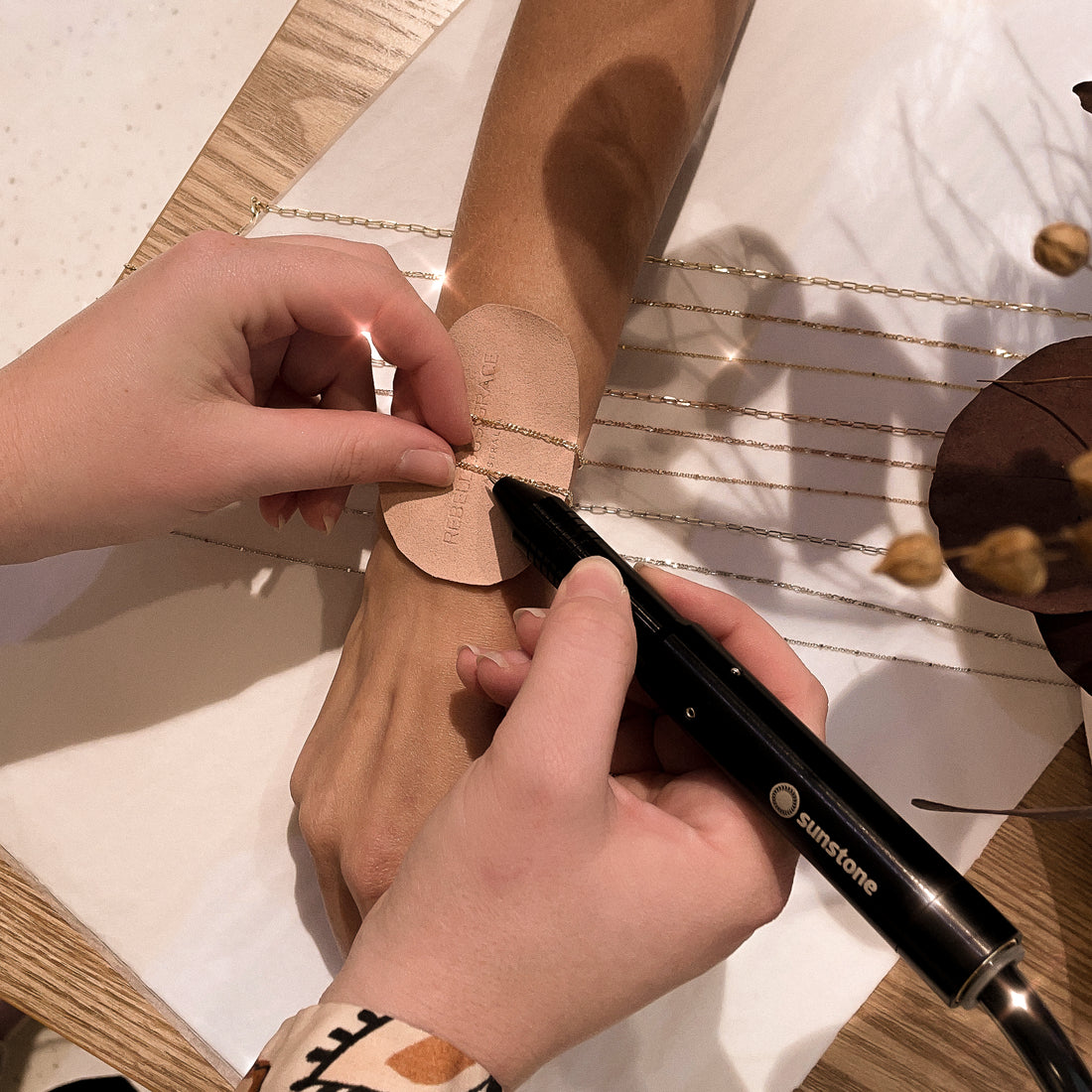At Rebellious Grace our commitment to offering the finest jewellery extends to providing you with valuable insights into the world of precious metals. Today, we explore the fascinating differences between silver and white gold, two captivating choices for jewellery that have distinct characteristics and allure.
Silver: A Timeless Classic
Silver is a precious metal that has been cherished for centuries. It's admired for its classic and timeless appearance. Here are some key aspects of silver:
- Composition: Silver is a naturally occurring metal and is generally found in its pure form, known as fine silver. Fine silver is exceptionally soft and not ideal for jewellery. Therefore, it is often alloyed with other metals, usually copper, to enhance its durability.
- Purity: Sterling silver, the most common type used in jewellery, contains 92.5% pure silver and 7.5% other metals. This combination creates a balance between the beauty of silver and the necessary strength for jewellery.
- Color: Silver has a distinct bright, white color that complements a wide range of gemstones and complements various styles. Its natural luster adds a touch of elegance to any piece.
- Tarnish: Silver jewellery may tarnish over time due to exposure to air and environmental factors. However, regular cleaning and maintenance can help retain its brilliance.
- Affordability: Silver is an affordable precious metal, making it an excellent choice for those who appreciate its timeless charm without the high cost.
White Gold: Modern Elegance
White gold, on the other hand, is a modern and sophisticated alternative to traditional yellow gold. It's admired for its contemporary appeal and versatility. Here are some key aspects of white gold:
- Composition: White gold is not a naturally occurring metal. It is created by alloying yellow gold with other white metals such as nickel, palladium, or silver. This alloy is then coated with a thin layer of rhodium, a precious metal, to achieve its signature white color.
- Purity: Like yellow gold, white gold is available in various purity levels, typically 18-karat (75% gold) and 14-karat (58.3% gold). The alloying metals provide durability and strength.
- Color: White gold's rhodium plating gives it a stunning white color that resembles platinum. It is a versatile choice for jewellery as it pairs beautifully with gemstones of all colors.
- Tarnish: White gold does not tarnish, thanks to its rhodium plating. However, over time, the rhodium may wear off, requiring re-plating to maintain its white color.
- Affordability: White gold is more expensive than silver but generally more affordable than other precious metals like platinum. It offers a balance between luxury and affordability.
Choosing Between Silver and White Gold
When deciding between silver and white gold for your jewellery, consider the following:
- Budget: Silver is an excellent choice for those on a tighter budget, while white gold offers a more luxurious appearance.
- Durability: White gold is more durable and less prone to tarnish compared to silver.
- Color Preference: Consider whether you prefer the bright white of silver or the rhodium-coated brilliance of white gold.
- Allergies: Some individuals may be allergic to the nickel in white gold. In such cases, choose nickel-free white gold or consider silver.
Silver and white gold both possess their unique charm and elegance. Whether you are drawn to the classic allure of silver or the modern elegance of white gold, Rebellious Grace offers a wide range of pieces to suit your style and preferences. Trust us to help you find the perfect jewellery that reflects your individuality and sophistication.

